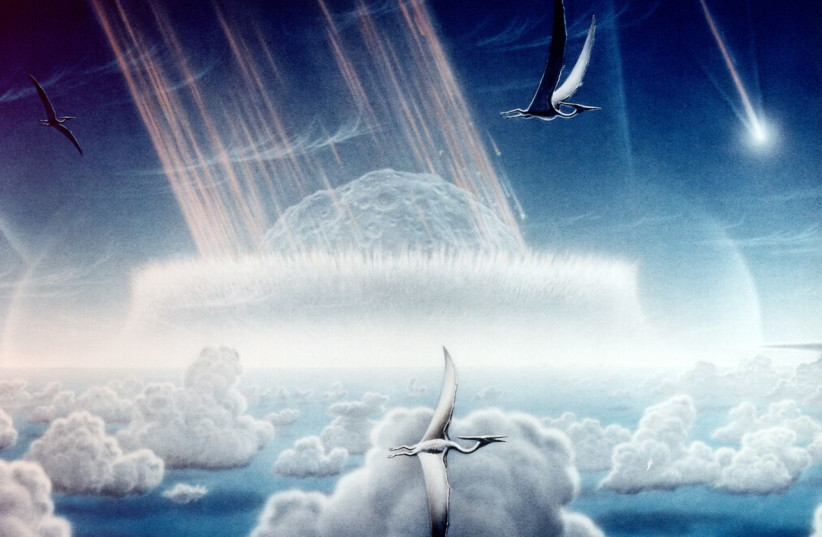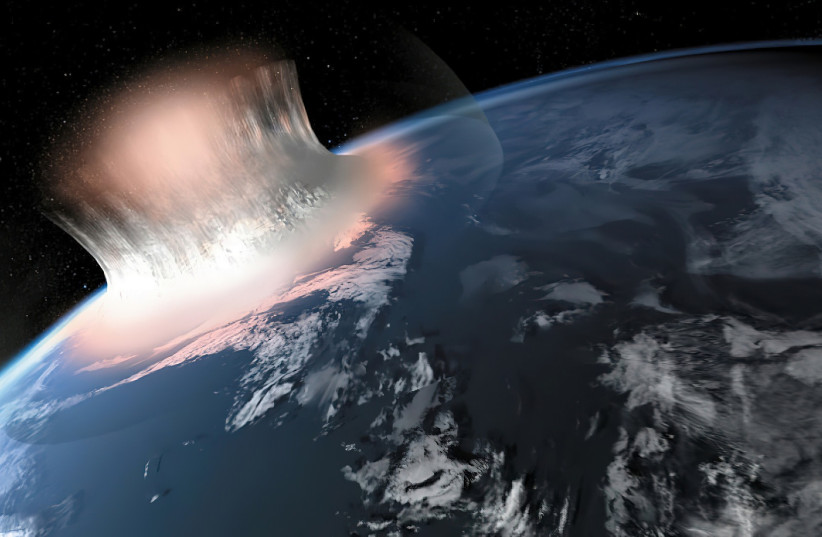Ever wonder what would happen if a giant asteroid suddenly barreled into your home, crashing into Earth and destroying everything around you in an event of apocalyptic horror? If so, then Asteroid Launcher is the Internet experience you're looking for.
Created by coder Neal Agarwal – who was also behind other interesting online experiences such as Spend Bill Gates' Money, Who Was Alive?, Universe Forecast and Absurd Trolly Problems – and based on a considerable amount of prior academic research by scientists over the years, Asteroid Launcher is a free online simulator that will show you what will happen if an asteroid impacts Earth at any location you desire.
And for American readers, yes, the launcher also works in imperial measurement units like feet and miles.
How do you figure out the damage of an asteroid impact?
Here's how it works.

In many ways, Asteroid Launcher is extremely reminiscent of the 2012 simulator Nukemap, made by Alex Wellerstein, which sought to test what would happen if a nuclear weapon would be launched and detonated anywhere in the world.
Users can select between the following different kinds of asteroids:
- Iron asteroids
- Stone asteroids
- Gold asteroids
- Comets
- Carbon asteroids
Next, you can pick the asteroid's diameter. These range from just one meter wide, just a bit longer than a baseball bat, to 1.5 kilometers wide, which is around the width of a small island.
After that, you need to calculate the speed, which ranges from one to 100 kilometers per second, and the impact angle, which ranges from five degrees to 90 degrees.
And arguably the most important part is picking a location. This is done by literally dragging over a map, powered by Apple Maps, rather than inputting specific coordinates.
Then, you press launch asteroid and see the results.
So how bad would it be?
To figure this out, we decided to see what would happen if an asteroid hit a random place in Israel, specifically a random location in the city of Rishon Lezion.
We chose a stone asteroid 60 meters in diameter crashing into the Earth at a speed of six kilometers per second with an impact angle of 31 degrees.
The result was a 1-megaton explosion known as an airburst occurring 9.3 kilometers above the ground.
Fine, but what about something bigger?
This time, we tested an iron asteroid 60 meters wide with a speed of 11 kilometers per second and an impact angle of 27 degrees, targeting a random location in Petah Tikva.
The results were considerably different.

First, it was still an airburst, this time resulting in an eight-megaton explosion 3.8 kilometers above the ground, meaning there would be no impact crater.
But the actual falling rock isn't the only way an asteroid can kill you. The explosion itself still carries enough force to cause major destruction.
According to these calculations, the Petah Tikva asteroid impact would cause a 198-decibel shock wave that would kill 92 people right away.
Anyone within 421 meters would have lung damage, and anyone within 3.2 kilometers would have their eardrums ruptured.
Buildings less than 7.8 kilometers away would collapse, encompassing most of Petah Tikva.
But the real killer wouldn't be the decibel burst, it would be the winds.
With winds going at 261 meters per second due to the asteroid impact in Petah Tikva, it is likely that 142,472 people would be killed. Trees within 12 kilometers would be knocked down, and anywhere within 6.5 kilometers would be like being inside a tornado.
Next, we tested out a 60-meter gold asteroid flying at 15 kilometers per second with a 42-degree impact angle, this time crashing into an area around the city center of Hadera.
This one, it turns out, would be the worst one yet, as the asteroid impact would have resulted in a 529-meter-deep crater that would kill 1,804 people due to a 53-megaton explosion.
The shockwave would reverberate out far more, with the 233-decibel shockwave killing around 35,297 people.
The winds from the asteroid impact would reach two kilometers per second in speed and would kill about 181,526 people, and the tornado-like windspeeds would encompass the cities of Netanya, Tulkarm and Zichron Ya'acov.
Then there would be a 5.6 magnitude earthquake, which would be felt 32 kilometers away and would kill around 133 people.
This is all serious stuff, clearly. And considering how none of these asteroids we've simulated exceed 140 meters, which is one of the factors NASA uses when considering if an asteroid is potentially hazardous, the death tolls seem shocking. But at the same time, this is all theoretical, right?

Putting theory into practice: Recreating asteroid impacts
Well, to better test that out, we decided to simulate some recent asteroid impact events.
Back in March 2022, a small asteroid known as 2022 EB5, itself around half the size of a giraffe at around 1.5-2 meters in diameter, impacted the Earth in the Arctic Ocean near Iceland at a speed of 18 kilometers per second.
While some of the specifics about this asteroid were unclear, we assumed it was an iron asteroid and clocked in the figures.
The simulator gave it an explosion of 721 tons of TNT, far less than the two kilotons that had actually happened, but it ultimately resulted in no danger.
Regardless, other factors such as unclear asteroid composition and impact angle may have been behind the discrepancy in figures.
But what about other asteroid impacts?
We decided to simulate the Chelyabinsk asteroid, which was a small 20-meter asteroid that exploded above the Chelyabinsk Oblast in Russia in 2013.
Reports vary about the asteroid's speed and impact angle, but we went with some reports which indicated a speed of 15 kilometers per second and an impact angle of 19 degrees.
The composition also isn't clear but is likely a stone asteroid.
We put all these variables into place and centered the map around the Chelyabinsk asteroid impact's epicenter, by the town of Yuzhnouralsk. Then, it was time to launch.
This impact resulted in an explosion 22 kilometers above the ground equivalent to 248 kilotons of TNT.
This is only a bit off from what actually happened, which was an explosion 29.7 kilometers above the ground equivalent to around 400-500 kilotons of TNT, which is around 26-33 times the energy of the nuclear bomb dropped on Hiroshima.
Once again, the variation could be caused by issues of unclear speed and impact angle.
One especially challenging possibility would be trying to recreate the Tunguska event, which is when what is believed to be an asteroid impacted in Russia in 1908 in a massive explosion that caused severe destruction to the environment. However, due to the remoteness of the location at the time, it only resulted in just a couple of deaths.
Nowadays, Russia is far more populated, and it is likely that another Tunguska event would have a far more catastrophic outcome. However, there isn't exactly a major scientific consensus about what asteroid caused the Tunguska event – in fact, some scientists speculate that it wasn't even an asteroid impact, but instead a "glancing" impact where it essentially bounces off the Earth, causing destruction with a massive shock wave but not actually impacting.
Because of that, it isn't clear how one would simulate this, unfortunately. However, the death toll would still likely be far larger.
Ultimately, Asteroid Launcher is a fun and morbidly curious online simulator, but don't be too alarmed, because NASA's predictions say Earth is safe from asteroid-induced Armageddon for at least another century.
Hopefully, by then, planetary defense efforts such as NASA's Double Asteroid Redirection Test (DART) Mission will be able to keep us safe from these cosmic catastrophes in waiting.
